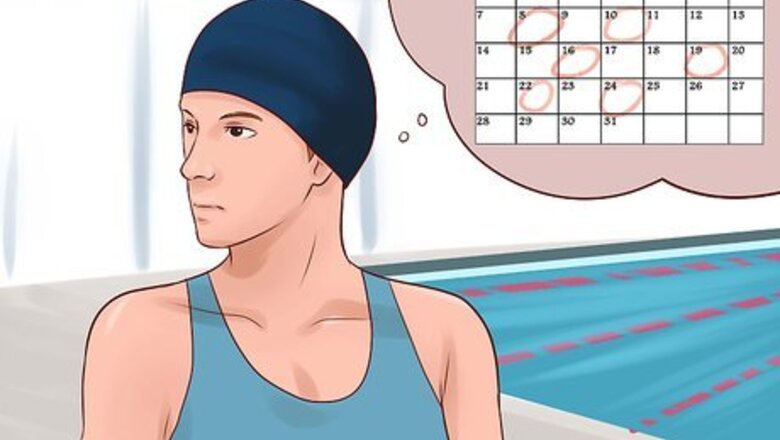
views
X
Research source
However, since swimming requires a lot of movements and muscles not typically used on land, swimming also requires a lot of training and practice before it feels easy. So with some know-how, practice, and positive attitude, you can get great results from your workouts.
Training in the Water
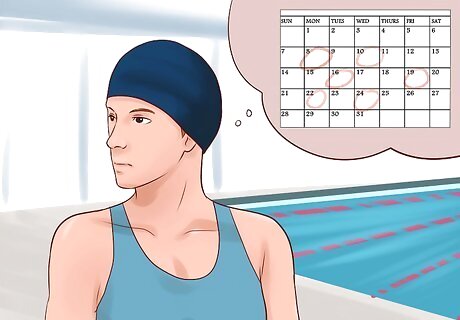
Plan a swimming routine. You don't need to work out everyday, but try commit to at least three days a week. Decide what time works best for you. Some people find it helpful to swim before work, while others benefit more from swimming after work. It just depends on what your schedule is. It will take your body some time to form the rhythms between your stroke and breathe. While you are first starting, commit yourself to swim at least 10 minutes three to five times a week. Then slowly push on to thirty minutes or more.
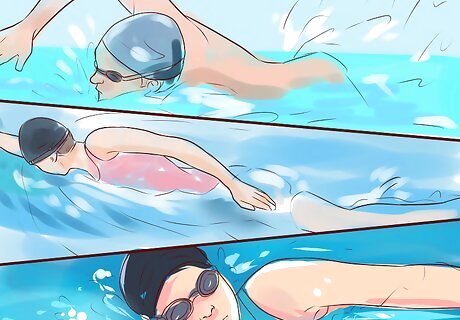
Structure your swim sessions to promote fitness. A 2-hour swim session might look like this: Warmup - 15 mins, typically 200m freestyle then more easy swims, done at strength pace (focusing on applying constant strong pressure on each movement). Kick or Pull - 15 mins. It's a great way to loosen up muscles and to start to warm up the legs or warm and get into a rhythm. Hypoxic - 5 mins, usually done before or after the main set, hypoxic describes the holding of breath under duress or exercise. Do sprints while only taking 1 or 2 breaths per length, or butterfly kick underwater to halfway and then butterfly (breathing every 3 strokes) for the rest of the length. Don't do hypoxic training for very long if you expect to be doing a main set afterwards. Main Set - 35 mins A short amount of lengths done at high intensity on fast times or lower intensity but lots of laps without rest. A good example is 5 x 50m freestyle on 40 seconds with a target of 30. Warmdown - Very important, warmdown gives swimmers a chance to recover and stretch out their muscles. You should be aiming to have a good DPS (distance per stroke; doing as little strokes per lap, should be doing 12-16 in a 25m pool).
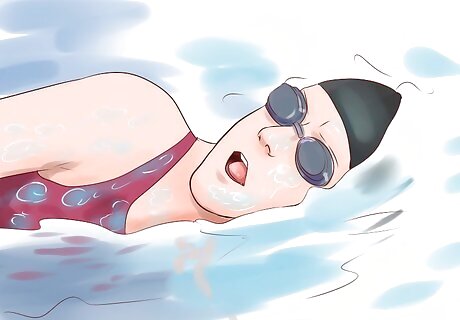
Work on your breathing. Focus on both your inhales and your exhales. When you're not breathing, don't move your head. Keeping your head in a fixed position is more efficient. Only tilt your head to breathe. A lot of swimmers have this problem of not exhaling underwater. Make sure you exhale a bit when submerging back underwater to maintain breathing and prevent your nose from filling up with water. Never tilt your head upwards when you need to take a breath. Always tilt your head to the side. In Freestyle, keep one goggle in the water and one goggle out. This helps to make sure that you don't over-turn your head. Try to breath every three or five strokes, to make sure you breath on both sides of your body. Don't hold your breath.
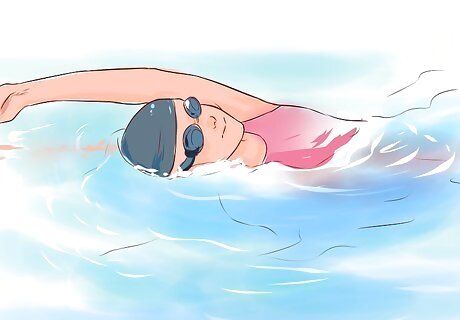
Develop your backstroke. The backstroke can be one the most challenging strokes to accomplish. It requires strong back and shoulder muscles. The key to perform a fluid backstroke lies in your hips. Practice a simple drill of flutter kicks on your back while one arm is raised. Switch arms after a lap and then finish with a lap of normal backstroke.
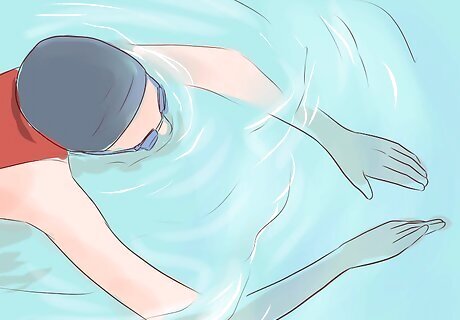
Strengthen your breaststroke. The breast stroke relies on the synchronization of your glide and stroke. This fluidity does not happen overnight. Pulling harder or trying to pull more water back can actually be counterproductive. Make sure to always do a pullout. Pullouts give you a headstart and and are very important for your breaststroke being strong and fast. Your arms shouldn't actually push water behind you, but instead you should focus on shaping an upside-down-heart with your hands. Bring your hands together as you extend them forward. Use your elbows, not your arms, to push your hands forward.
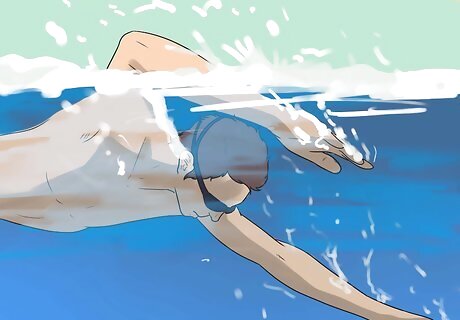
Isolate a single stroke per exercise. If you commit a full day to just one type of stroke, you'll sync into the rhythm of that stroke faster. You could even isolate one stroke for an entire week, then switch strokes the following week.
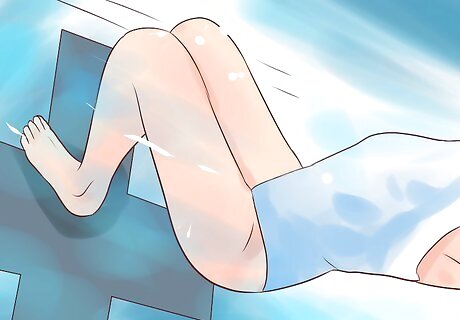
Learn how to do a flip turn. This is a tricky maneuver that will increase your speed doing laps. Look for the "big T." The "big T" is the perpendicular line at the end of the lane in a lap pool. As your head crosses the T, tuck your chin into your chest while you are following through with a stroke. Then dolphin kick your legs for a final push. Don't look up before doing the flip. The wall will always be there as long as you look for the "big T" at the bottom of the pool. This maneuver can be a challenge and it is recommend to have someone to show you first-hand how to do this. To go faster, do a couple of dolphin kicks underwater in streamline position. Try to get past the flags above the pool if you can.
Practicing Core Swim Exercises
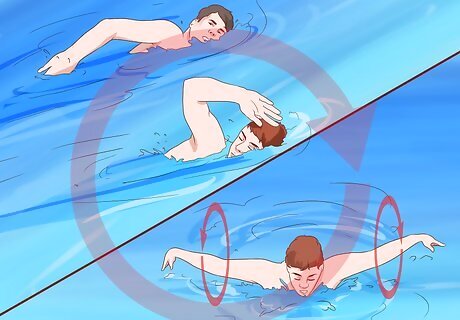
Train using swim drills. One way of improving your swimming is by strengthening your technique. When you incorporate certain drills into your training, you'll benefit by strengthening your muscles and individual components of your stroke.
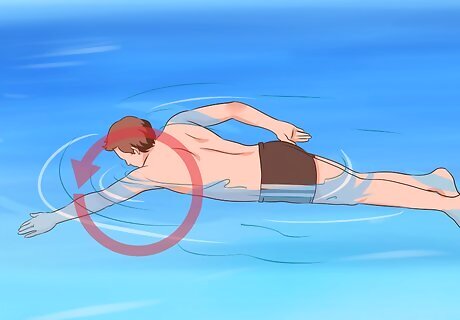
Practice the single arm drill. Isolate your stroke to just one arm per lap. This will help keep your stroke symmetrical and balanced. Hold on to a kick-board if you are having trouble staying in a straight line. Keep your kick consistent and narrow throughout the drill.
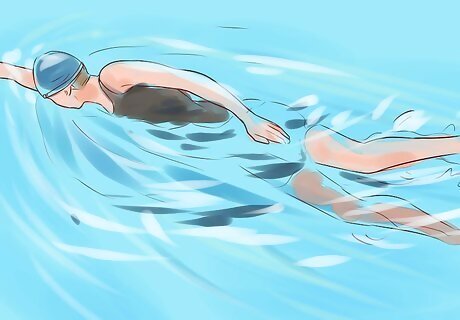
Use the side kick drill. Keep one arm extended out in front of you while your body tilts onto its side, perpendicular to the water. Focus on maintaining a consistent kick. Your head will stay down in the water except when you rotate it to breathe. Switch arms after each lap.
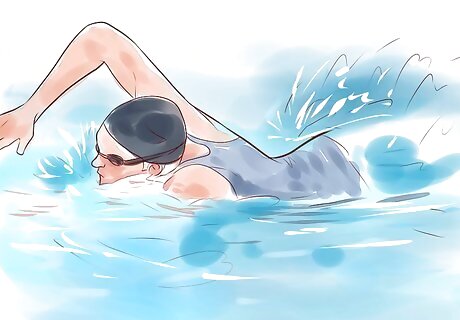
Practice the Tarzan drill. Practice your free stroke as you normally would, but keep your head extended out of the water, facing forward. This drill strengthens your kick, neck, and back muscles. Only practice this drill for shorts distances.
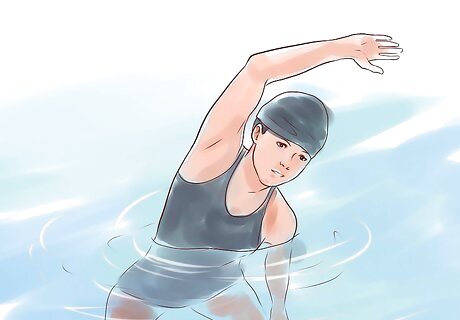
Practice stationary water exercises. There are plenty of pool exercises you can preform that don't require you to swim laps. Sometimes your gym or pool facility will have exercising equipment designed for the water like water gloves, paddles, or buoys.
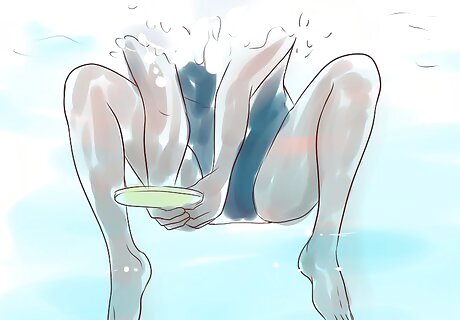
Do the jump and dig technique. Position your legs in a wide stance in an upright position. Then bring your knees up to the surface and back to floor. While your knees are at the surface, plunge your hands down and scoop them up to the surface as your legs move back onto the ground.
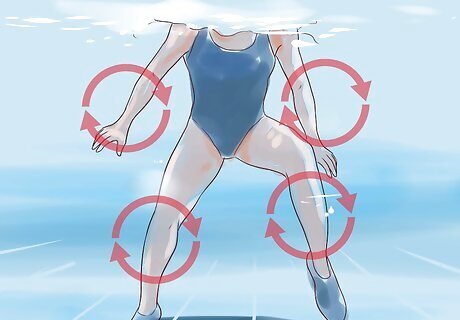
Try the stomp and push exercise. Position your legs in a wide stance and begin pumping them alternatively. Imagine you are doing high knees or squashing grapes. Extend your arms out away from you and bend them towards the bottom. As you are pumping your legs, do the same motion with your arms.
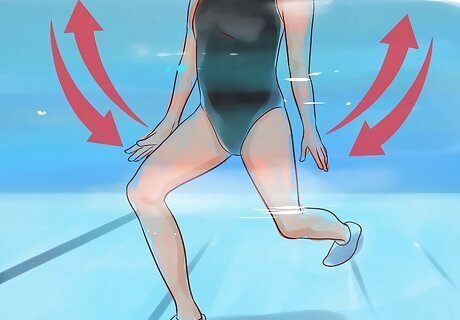
Practice a scissor press. Put one leg in front of the other in a plunge position, and keep your knee bent to a 90 degree angle. Hold your arms outwards, at the surface of the water, then bring them into your body. Use a buoy for increased tension.
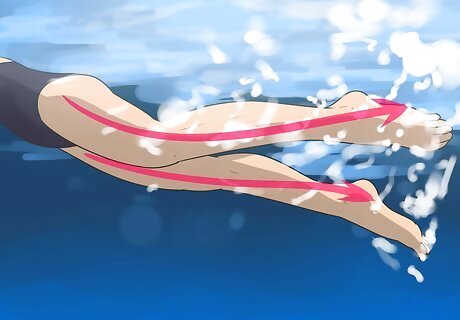
Work on kicking. You may use a kickboard that you can purchase or borrow from pool or gym. Simply hold onto the kickboard and kick any kick you want. There are many different positions for your arms. Find whatever you like better. You can also put your arms in a streamline and kick on your back.
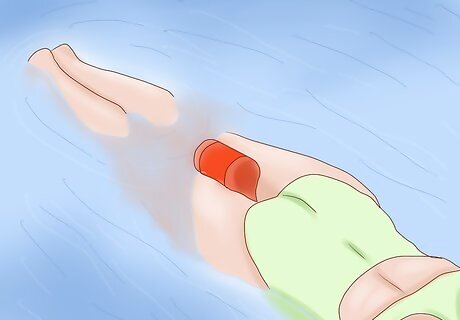
Work on pull. Use a pull buoy that you can buy or borrow from your pool, gym, club, etc. Put the buoy between you ankles or thighs, which ever you prefer, and pull. Remember not to kick because it will make the pulling less effective.
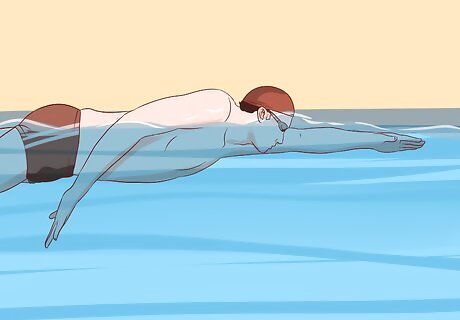
Do the "fingertip drag" drill in freestyle. Instead of lifting your hand above the water, the swimmer drags his or her fingertips along the surface.
Training Outside the Pool
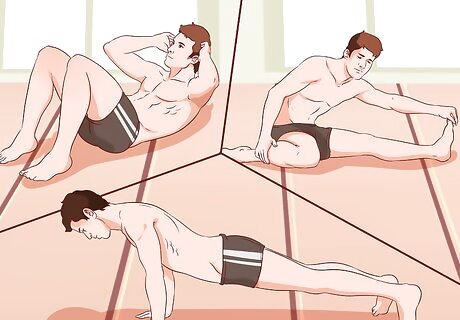
Warm up before you get in the pool. If you are getting serious about swimming then you should be warming up outside the pool (no more than 30 mins is necessary) before you go swimming. Do hamstring stretches, prone holds, sprinting, push ups, sit-ups, burpees, and streamline burpees (where you have to do a burpee but end in a tight streamline).
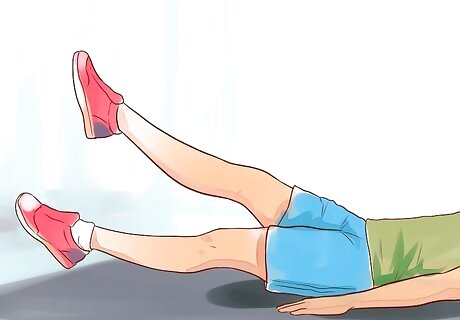
Strengthen your kicks. If you can't make it to the pool you can still improve your strokes and build muscle. Practicing flutter kicks can be a great exercise for your core. Lay on your back and position your hands together underneath your rear. Then elevate your legs lightly and begin kicking your legs alternately. Try doing this for about thirty seconds, rest, and repeat.
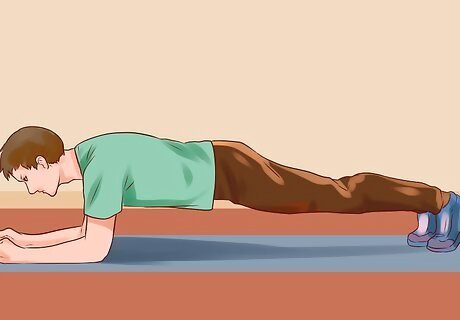
Work on your planks. Planks are effective body weight exercises that strengthen your upper and lower body, as well as your shoulders, arms, and glutes. This is a great out of water exercise. Practice these steps to perfect your planks: Position yourself like you are about to do a push-up. Ground your arms slightly wider than your shoulders length. Use your toes to hold your feet and squeeze your glutes (your butt), to stabilize your body. Align your head to be in line with your back. Focus looking down at a single spot on the floor. Hold this position for about twenty seconds. You want to make sure that your legs aren't holding any of the pressure. Practice this at intervals that are comfortable to you.
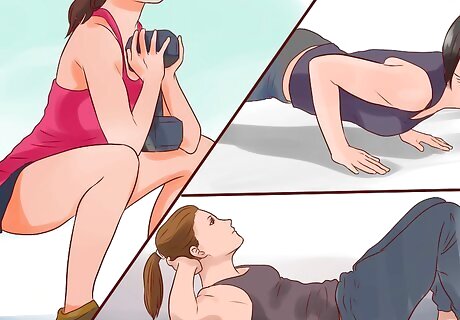
Perform weightless exercises. You don't need to hit the gym every time you need to workout. Set yourself up for a routine of about twenty minutes. Try a few of these in your exercise: 10-15 reps of push-up 20-30 reps of crunches 5-10 reps of pull ups 10-15 reps of goblet squats Rest for a minute and repeat
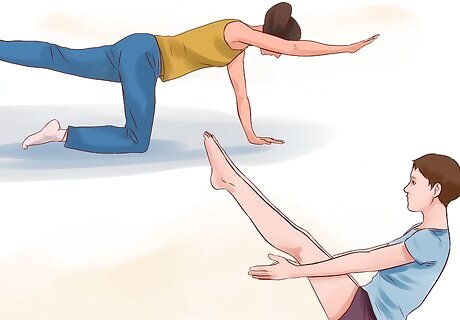
Strengthen your core. Your core is the most important group of muscles that helps you do just about everything. Swimming relies heavily on the strength of your core. Practice a few routines like these: The bird dog position. Get on your hands and knees, and hold your spine as flat as possible. Then extend your left arm and right leg out away from your body. Do not raise your limbs over your spine, but rather keep them on level with your back. Hold this position for three-four seconds and then switch limbs. V-Sits. Start in a seated position and raise your legs to a 45 degree angle. Extend your arms out to your knees and hold this position for 10-30 seconds. Scissor crunches. Lie on your back and extend your legs flat on the ground. Keep your hands down by your side. Raise your right leg straight up towards the ceiling and lift your left leg about three to four inches off the ground. Take your left arm and extend it to meet your right foot up by the ceiling. Hold this pose for about 10-30 seconds and then switch limbs. EXPERT TIP Brad Hurvitz Brad Hurvitz Certified Survival Swimming Instructor Brad Hurvitz is a Certified Swimming Instructor for My Baby Swims, an adolescent swimming school based in La Jolla, California. Brad is trained as an Infant Swimming Resource (ISR) instructor with ISR's Self-Rescue® program. He specializes in training children aged six months to six years of age survival skills like floating on their back to breathe and swimming back to the wall, while also educating parents on how to better keep their kids safe. He has a Master of Business Administration from Oregon State University. Brad Hurvitz Brad Hurvitz Certified Survival Swimming Instructor Expert Trick: If you want to become a better swimmer, practice rowing exercises. Rowing is a full-body workout, just like swimming. It's also easy on your joints.
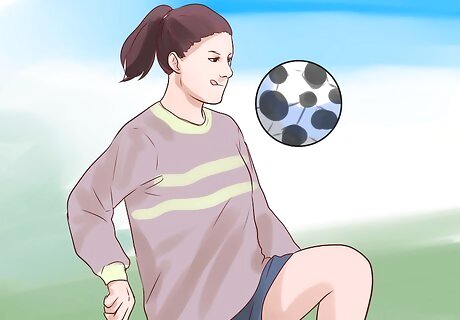
Practice other sports outside the pool. Keeping up your cardiovascular system when you don't have a chance to hit the pool will help you stay in shape. Soccer is a great sport that will challenge your lungs and muscles. It also takes a good deal of hand eye coordination that parallels to syncing into your breathe and stroke.
Getting Outside Help
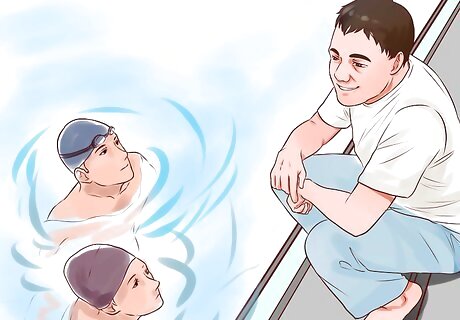
Get a swim coach. Many pools and clubs have programs available for kids, but few accommodate aspiring adults or teens. Seek out someone who has had experience working with adults. Make sure their personality fits with yours. You'll need someone who can listen and provide feedback on your strokes.
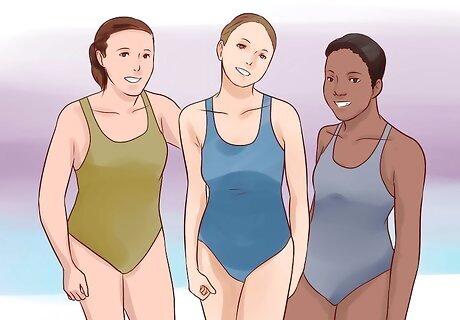
Join a swim group. The U.S. Masters Swim Group is a good program for people over twenty looking for a group to swim with. They vary from complete beginners to more seasoned athletes. Your local gym or health club might also offer something similar, and could be a better alternative.
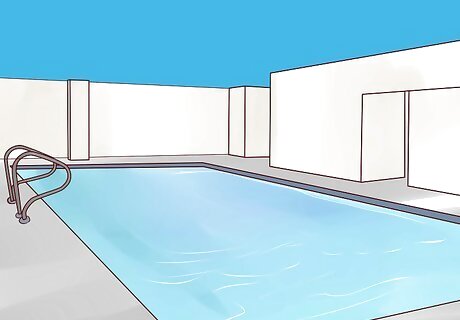
Join a gym with a pool. You'll find that many facilities near you have pools. Shop around and find the one that is best fit for your price range that has a decent pool.

Ask a friend for support. If you are committing yourself to something physically demanding, it might be good for you to have someone who will support you. This person doesn't need to do the exercises with you, but they'll merely act as a support system if you become discouraged. Having a friend who is willing to commit to a swim routine with you is an extra bonus and a good friend.












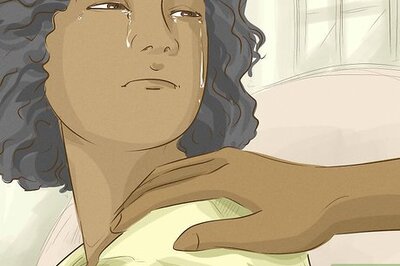




Comments
0 comment